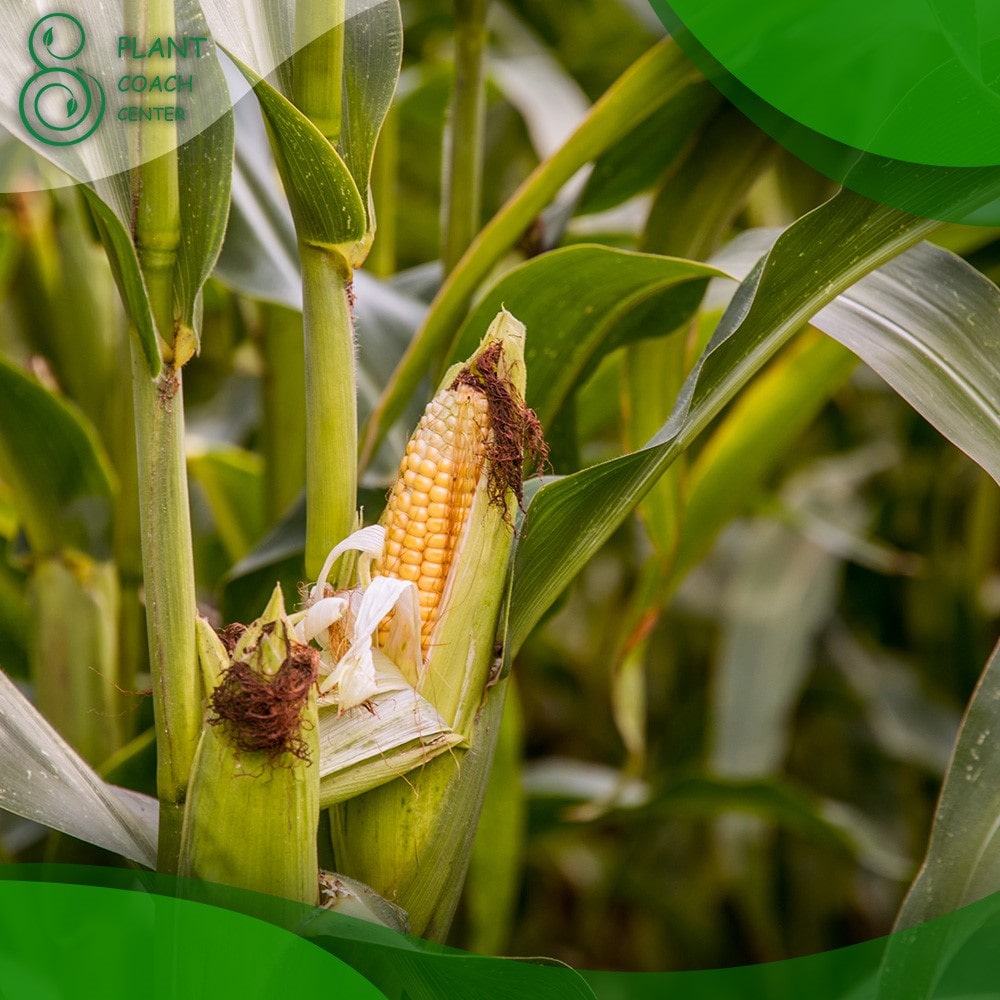When Do You Plant Corn?
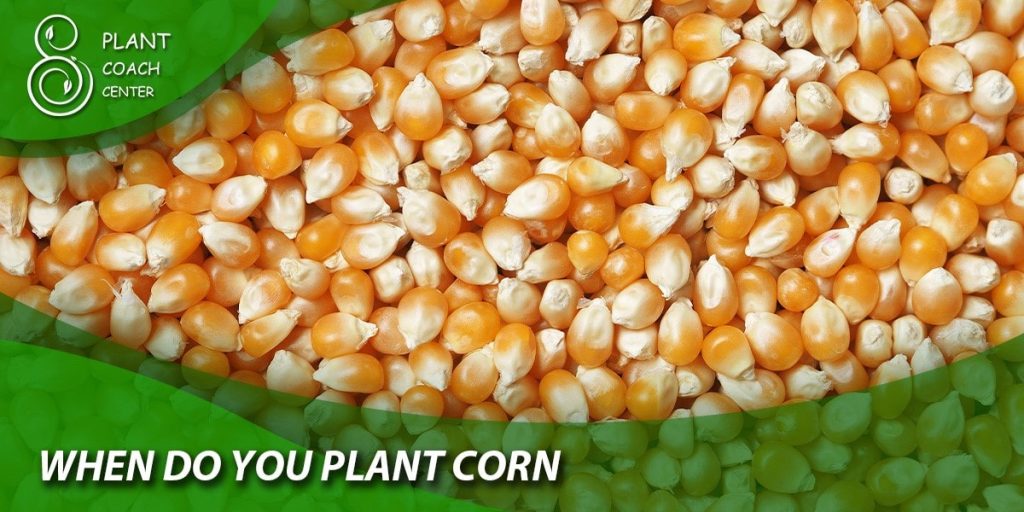
Embarking on the journey of cultivating corn is akin to joining a harmonious dance with nature, where the art of timing holds the key to a bountiful harvest. As the golden grains of corn bear witness to the cyclical passage of seasons, farmers and enthusiasts alike are responsible for decoding nature’s subtle cues to determine the perfect planting time.
From the gentle whispers of the wind to the warming embrace of the sun, each natural element plays a vital role in this intricate agricultural symphony. In this article, we delve deep into the fascinating world of corn cultivation, uncovering the secrets of optimal planting times and exploring innovative techniques that transcend the boundaries of conventional wisdom.
By understanding the delicate interplay between environmental conditions, regional variances, and the diversity of corn varieties, we aim to equip aspiring corn cultivators with the knowledge and confidence needed to sow the seeds of success. So, don your gardening gloves, and let’s venture into the heart of corn planting to unveil the secrets of nurturing these vibrant green sentinels of the earth.
Listening to Nature’s Whisper: Finding the Perfect Planting Time
When planting corn, Mother Nature often provides subtle hints that guide us to the most opportune moment for sowing seeds. Understanding and interpreting these signs can significantly impact the success of your corn crop. Here are some essential aspects to consider when listening to nature’s whisper and determining the perfect planting time:
Temperature Trends
Monitoring temperature trends is crucial in identifying the right time to plant corn. Corn thrives in warm soil, with the optimal temperature for germination ranging between 50°F to 86°F (10°C to 30°C). Before planting, observe the local weather patterns and track the soil temperature consistently.
Growing too early when the soil is still cold can lead to poor germination rates while planting too late might not give the corn sufficient time to mature before the arrival of frost.
Soil Conditions
Assessing the soil conditions is another vital aspect of choosing the ideal planting time for corn. Soil should be well-drained, adequately prepared, and free from excessive moisture. Work the ground to a crumbly texture, allowing young roots to penetrate quickly and promote healthy growth. Conduct a soil test to check nutrient levels, pH balance, and organic matter, ensuring the soil sustains the corn plants.
Daylight Length
Corn is a long-day plant, meaning it requires ample daylight to thrive. The number of daylight hours significantly affects the growth and development of corn.
Warmer months with longer days provide corn with the necessary energy to flourish. Before planting, consider your location’s latitude and the average daylight hours during the growing season. Planting during extended daylight ensures your corn has enough time to mature properly.
Weather Patterns
Keeping a close eye on weather patterns is essential for successful corn planting. Excessive rainfall or drought can negatively impact the crop’s growth. Aim to plant when the weather forecast indicates a relatively stable period, avoiding planting during heavy rains or dry spells. Additionally, be prepared for sudden weather changes and have contingency plans to protect young corn plants from potential damage.
Indigenous Knowledge
Traditional farming wisdom passed down through generations can offer invaluable insights into the perfect planting time for corn. Local farmers and agricultural experts often possess knowledge specific to the region’s climate and environmental factors. Engaging with experienced farmers and understanding their tried-and-tested practices can provide valuable guidance in deciding the best time to sow your corn seeds.

Seasonal Secrets: Unraveling the Mysteries of Planting Corn
In agriculture, the success of planting corn lies not only in the hands of the farmer but also in the hands of Mother Nature, who orchestrates the changing seasons. Each season presents challenges and opportunities for corn cultivation, and unraveling the seasonal mysteries is critical to optimizing crop yield and quality. Let’s explore the secrets of planting corn in different seasons:
Spring Planting
Spring heralds the awakening of nature, making it an ideal time to start planting corn. As the soil gradually warms up and the risk of frost diminishes, it’s crucial to plan the planting schedule carefully. Early spring planting can be advantageous in regions with a long growing season, giving corn more time to mature.
However, areas with a shorter growing season may benefit from waiting for the soil to warm up further before planting. Monitor weather forecasts closely and aim to produce when the soil temperature reaches the optimal range for germination.
Summer Planting
While most corn planting occurs in spring, summer planting can offer unique opportunities for specific regions. A second planting of corn can be considered in areas where the growing season extends into late summer and early fall. This practice, known as “double-cropping,” takes advantage of warm temperatures and longer daylight hours.
When implementing double-cropping, choose early-maturing corn varieties to ensure they have enough time to reach maturity before the arrival of frost.
Fall Planting
Fall planting of corn is uncommon but can be a strategic approach for specific climates. Planting corn in late summer or early fall may allow for a late-season harvest in regions with mild winters and well-drained soils. However, the risk of colder temperatures and potential early frost must be carefully assessed. Additionally, fall-planted corn might face challenges from pests and diseases that are more prevalent during cooler seasons.
Winter Considerations
It’s essential to be mindful of winter preparation for corn planting in areas with harsh winters. Cover crops can help protect the soil from erosion, improve soil health, and add nutrients for the following season. Winter cover crops like rye, oats, or clover can be sown to keep the soil productive during the off-season. When spring arrives, these cover crops can be tilled into the ground, providing organic matter and enriching the soil structure for the corn crop.
Regional Variability
Understanding the unique characteristics of your region is critical for successful corn planting. Different climates, soil types, and elevation levels can significantly influence the selection of the best planting time and corn variety. Seek advice from local agricultural extension offices, interact with experienced farmers in your area, and study historical weather data to tailor your planting strategy to the specific needs of your location.
Planting for Success: Nurturing Corn from Seed to Sprout
As any seasoned farmer knows, successful corn cultivation requires meticulous care from when the seeds are sown until the first tender sprouts emerge from the earth. Nurturing corn through its early growth stages is crucial for establishing robust plants that can withstand the challenges of the growing season. Let’s explore the essential steps and practices for ensuring success in nurturing corn from seed to sprout:
Preparing the Soil
The foundation of a thriving corn crop starts with the soil. Before planting, ensure the soil is well-drained, fertile, and debris-free. Test the soil to determine its pH level and nutrient content, and make any necessary amendments to create an optimal environment for corn growth. Tilling the soil to a depth of 6 to 8 inches (15 to 20 cm) helps to break up compacted ground, allowing young corn roots to penetrate easily.
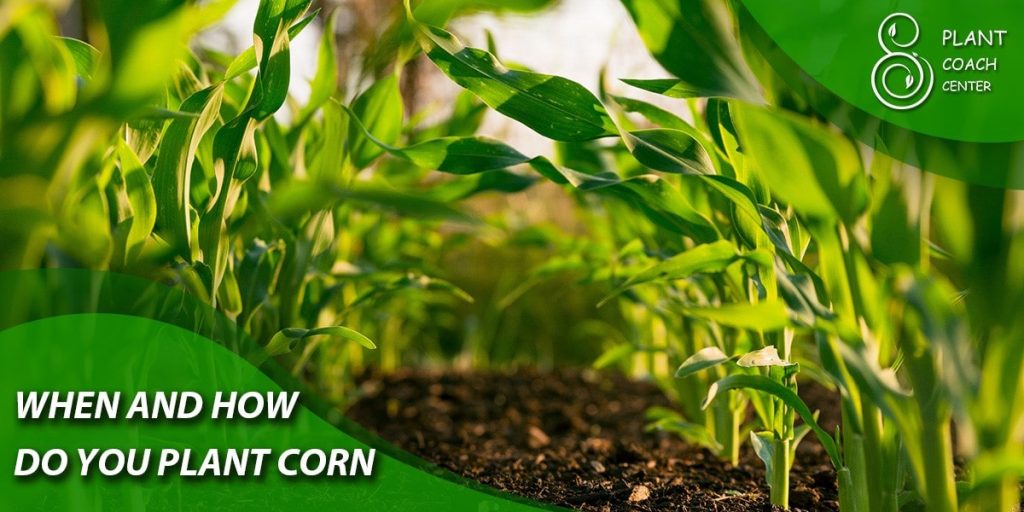
Sowing the Seeds
When sowing corn seeds, consider the spacing and depth to promote healthy growth. Plant seeds in rows, maintaining a distance of about 9 to 12 inches (23 to 30 cm) between each source. The ideal seeding depth is approximately 1 to 2 inches (2.5 to 5 cm). Proper spacing and depth ensure that each plant has enough space to grow and access essential nutrients, sunlight, and water.
Watering Wisely
Adequate watering is crucial during the germination and early growth stages of corn. Keep the soil consistently moist but not waterlogged. Overwatering can lead to root rot, while underwatering may result in poor germination. A gentle, consistent watering routine is vital until the seedlings establish robust root systems.
Providing Nutrients
Corn is a nutrient-hungry crop, especially during its early development. Consider incorporating a balanced fertilizer with essential nutrients like nitrogen, phosphorus, and potassium into the soil during planting. Alternatively, use organic compost to enrich the soil and provide a steady supply of nutrients as the corn grows.
Protecting Against Pests and Diseases
Young corn plants are vulnerable to pests and diseases, hindering their growth and development. Employ preventative measures such as using pest-resistant corn varieties, practicing crop rotation, and maintaining good garden hygiene. Regularly inspect the plants for signs of pests or diseases, and take prompt action if any issues are detected.
Thinning and Weeding
Once the corn seedlings reach about 4 to 6 inches (10 to 15 cm), thinning is necessary to allow the healthiest plants to flourish. Remove weaker or overcrowded seedlings, leaving a spacing of about 12 to 15 inches (30 to 38 cm) between the remaining plants. Regular weeding is also essential to prevent competition for resources and ensure the corn plants receive the necessary nutrients.
Mulching for Moisture Retention
Applying a layer of organic mulch around the base of the corn plants helps to conserve moisture, suppress weeds, and maintain a stable soil temperature. Mulching also adds valuable organic matter to the soil as it decomposes, enhancing its health.
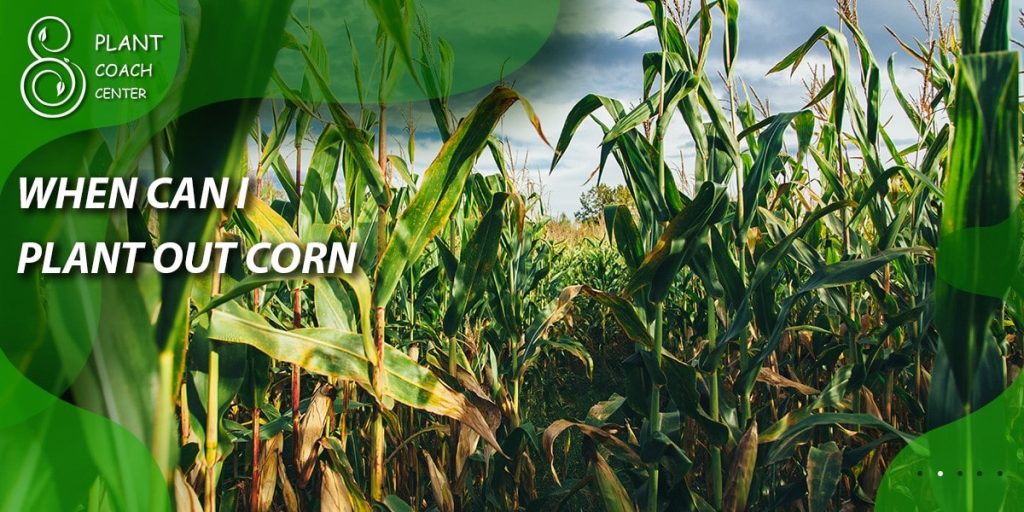
Maximizing Growth Potential: The Science of Optimal Planting Dates
Planting corn at the right time is akin to setting the stage for a captivating performance, where each element plays a critical role in the crop’s overall success. The science of optimal planting dates delves into the intricate relationship between the natural world and agricultural practices to maximize the growth potential of corn.
Let’s explore the key factors and scientific insights that guide farmers in determining the best time to sow their corn seeds:
Understanding Growing Degree Days (GDD)
Growing Degree Days (GDD) is a fundamental concept in the science of planting dates. It refers to the cumulative measure of heat units a plant requires for growth and development. By monitoring the daily temperatures and calculating GDD, farmers can identify the most suitable planting date. Corn has specific GDD requirements for various growth stages, and by aligning planting with favorable GDD conditions, farmers can optimize crop development and maturity.
Heat and Soil Temperature
Corn is susceptible to soil temperature during germination. Planting when the soil has reached the appropriate temperature range (around 50°F to 86°F or 10°C to 30°C) is crucial to ensure successful seedling emergence. Soil temperature affects seed imbibition and germination rates, and planting when the soil is too cold can lead to delayed or uneven emergence. Monitoring soil temperature using thermometers or specialized tools can aid in pinpointing the ideal planting date.
Photoperiod Sensitivity
The growth and development of corn are influenced by the length of daylight hours, known as photoperiod sensitivity. Corn is considered a short-day plant, meaning its flowering and reproductive processes are triggered by shorter daylight. Understanding the photoperiod sensitivity of corn varieties can help farmers select the proper cultivars for their region and ensure that pollination and flowering occur during the most favorable conditions.
Risk Management and Climate Variability
Optimal planting dates are not solely determined by historical averages but also by managing climate variability and potential risks. Climate change can bring about shifts in temperature patterns, altered precipitation levels, and unexpected weather extremes. Farmers must consider these factors when deciding on planting dates, aiming to reduce the vulnerability of their crops to adverse weather events.
Crop Rotation and Previous Planting Dates
The science of optimal planting dates also involves considering the rotation of crops and the history of previous plantings. Crop rotation helps break disease and pest cycles, enhances soil health, and promotes sustainable farming practices. Observing the planting dates of previous crops can offer valuable insights into local climate trends and assist in making informed decisions for the current season.
Utilizing Climate and Agricultural Models
Advancements in technology have provided farmers with access to climate and agricultural models that can assist in determining optimal planting dates. These models use historical weather data, satellite information, and sophisticated algorithms to predict climate patterns and recommend the best crop planting times. Leveraging such tools can enhance decision-making and increase the likelihood of successful corn cultivation.
Beyond the Calendar: Innovative Approaches to Corn Planting
While traditional agricultural practices have long relied on the calendar to determine planting times, innovative farmers are exploring unconventional methods that transcend the boundaries of conventional wisdom. These forward-thinking approaches to corn planting capitalize on unique synergies, sustainable practices, and ancient wisdom to achieve remarkable results. Let’s explore some of the innovative techniques and ideas that push the boundaries of traditional planting practices:
Intercropping with Legumes
Intercropping corn with leguminous plants, such as beans or peas, is a fascinating practice gaining popularity among innovative farmers. Legumes can fix nitrogen from the atmosphere into the soil, enriching it with this essential nutrient.
When intercropped with corn, legumes provide a natural nitrogen source, reducing the need for synthetic fertilizers. Additionally, the taller corn stalks support climbing legume plants, creating a mutually beneficial relationship that maximizes space and resources.
Utilizing Cover Crops
Cover crops have emerged as a powerful tool in sustainable agriculture, including corn planting. Farmers can protect and improve soil health, suppress weeds, and prevent erosion by sowing cover crops in the off-season or between corn rotations.
Cover crops like clover, rye, or vetch can be grown alongside corn or in alternating cycles, replenishing the soil with organic matter and promoting a healthy microbial ecosystem. When these cover crops are rolled or mulched, they create a protective layer that fosters optimal corn growth.
Companion Planting Strategies
Embracing companion planting principles can unlock hidden potential in corn cultivation. Pairing corn with compatible plants that exhibit mutually beneficial characteristics can enhance crop health and yield. For instance, planting corn with squash or pumpkins creates a natural shade cover that suppresses weeds and conserves moisture in the soil. Similarly, interplanting aromatic herbs like basil or dill can help repel pests and attract beneficial insects to the cornfield.
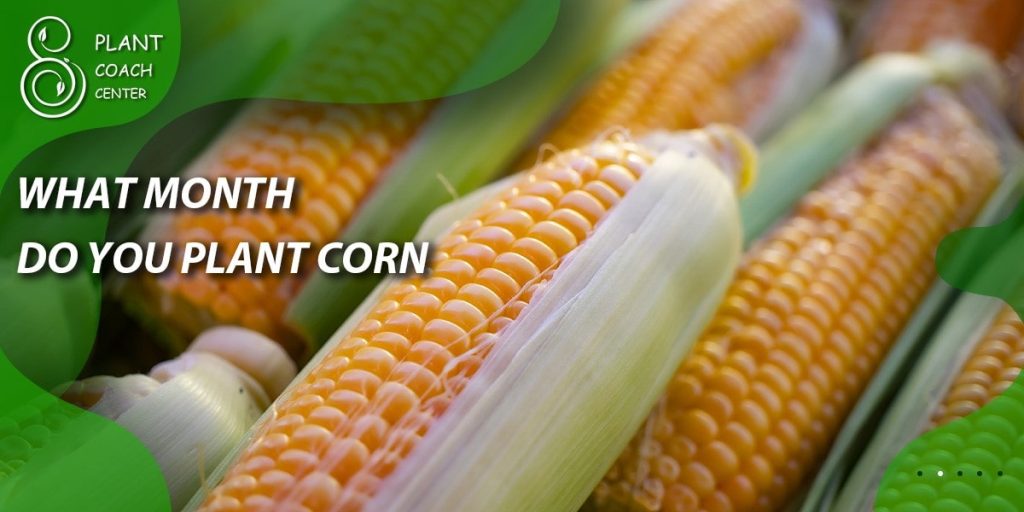
Moon and Celestial Planting Calendars
Some innovative farmers explore the moon and celestial planting calendars, drawing inspiration from ancient agricultural practices. These calendars are based on lunar cycles and planetary positions, suggesting specific periods when planting certain crops, including corn, may yield better results. While scientific evidence for the efficacy of celestial planting remains inconclusive, many farmers find value in aligning their planting activities with these traditional rhythms, fostering a deeper connection with nature and the land.
High-Tech Precision Planting
On the cutting edge of innovation, precision planting leverages advanced technology to optimize planting practices. Modern equipment and GPS-guided machinery allow for precise seed placement, spacing, and depth. This technology enables farmers to adjust planting strategies according to specific soil conditions and variations across the field, ensuring uniform growth and maximizing resource efficiency.
Climate-Smart and Data-Driven Approaches
Innovative farmers are harnessing the power of climate-smart agriculture and data-driven decision-making. Farmers can identify favorable planting windows and mitigate potential climate-related risks by analyzing historical weather patterns and leveraging weather forecasting tools. Incorporating climate-smart practices like drought-tolerant corn varieties or water-efficient irrigation techniques ensures resilience in changing weather patterns.
Conclusion
Farmers and enthusiasts find themselves at the forefront of change in the dynamic world of corn planting, where the harmony between nature’s rhythms and innovative practices intertwines. Embracing the science of optimal planting dates, experimenting with unconventional methods, and adapting to climate variability are all essential elements in unlocking the full potential of this remarkable crop.
From listening intently to nature’s whispers and understanding seasonal secrets to nurturing corn from seed to sprout, each step in the journey is an opportunity for growth and learning. As we venture beyond the calendar, exploring the frontiers of agricultural innovation, the commitment to sustainable practices and resilience becomes paramount.
PlantCouchCenter.com stands as a beacon of knowledge and inspiration, empowering individuals to confidently navigate the challenges of corn planting. With the fusion of traditional wisdom, cutting-edge technology, and profound respect for the land, we sow the seeds of tomorrow’s harvest, cultivating a brighter, more sustainable future for all. Together, we forge a path toward thriving, climate-resilient agriculture, securing the abundance of golden cornfields for generations to come.
What is the best temperature for planting corn?
The optimal soil temperature for planting corn is between 50°F to 86°F (10°C to 30°C).
How can I cope with climate variability in corn planting?
Adaptation strategies include diversifying corn varieties, early season planting, and efficient water management.
Why is cover cropping beneficial for corn cultivation?
Cover crops protect soil health, suppress weeds, and add organic matter, fostering optimal corn growth.


